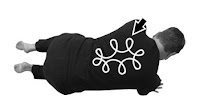As part of a 9-day yoga intensive workshop, we eliminated sugar, alcohol, and caffeine from our diets. I decided to go a step further and stay away from dairy and gluten as well, since I know my digestive system is sensitive to these foods. After a week on the “diet”, I notice more energy overall and that my muscles and connective tissue are much more supple. That led me to wonder, how do sugar and gluten make muscles and connective tissue sticky, and how does a good diet make fascia healthy?
According to the 20-Day Rejuvenation Diet Plan, when the body can’t fully digest food, it creates toxins that travel through the blood stream to other parts of the body. Also, when the body does not have optimal nutrition, its ability to eliminate waste is diminished, so the byproducts of muscle contraction like acids and calcium build up in the connective tissue.
Detox diets and regimens have become very popular lately, with wild promises and bizarre combinations. My father-in-law claims the best detox is to eat nothing but grapes for a day. I don’t think that you have to resort to coffee enemas or intestinal insult to clean your insides. Instead, I propose that there are two parts to a plan that reduces the load on our internal organs and allows them to function more optimally. Step one: eliminate foods that are hard to metabolize. Step two: make sure that the body is getting what it needs for optimal health.
It’s just common sense to avoid environments that are harmful, such as cigarette smoke, pollution, and noxious chemicals. Eating hard-to-digest food can clog up your system in the same way. According to
Wikipedia, some foods to avoid when detoxing include caffeine, processed foods, sugar, and fried foods.
One of the advantages of eliminating junk is that you replace empty calories with more nutrient-rich food, but your body may need even more support. Water is essential for any cleansing process; the body depends on it for everything. Also, even with nutrient-rich food, many people need a vitamin and mineral supplement. Some people have found taking an enzyme supplement helps with digestion, making the nutrients in food more available. And, we can’t forget fiber, the colon’s vacuum cleaner. Dr. Weil gives reasonable diet advice, including an
anti-inflammatory diet.
One more thing: if you’re asking your body to detox, it needs the energy to do it, and that means a good balance between activity and rest. Exercise enough to flush the waste products out of your muscles and stimulate your lymph system, as I outlined in a previous post,
Detox Your Body with Movement. But also make sure you get enough rest, because that is when your body is best able to heal.
The liver, lungs, kidneys, intestines, skin, and lymph system are designed for daily detox. We can help them do the job with sensible eating habits. Be wary of extravagant promises though, as noted in the
article from WedMd. The idea is to get healthier, not to deplete your system.


















































 Last month at the Homosassa Springs Wildlife State Park in Florida, I had the opportunity to see dozens of wild species native to Florida. Every single animal undulated: manatees swimming, a snake reaching for a branch, otters wrestling, turtles paddling. The birds especially caught my eye. I don’t think they have neck pain, because they work out the kinks with their own movement.
Last month at the Homosassa Springs Wildlife State Park in Florida, I had the opportunity to see dozens of wild species native to Florida. Every single animal undulated: manatees swimming, a snake reaching for a branch, otters wrestling, turtles paddling. The birds especially caught my eye. I don’t think they have neck pain, because they work out the kinks with their own movement.